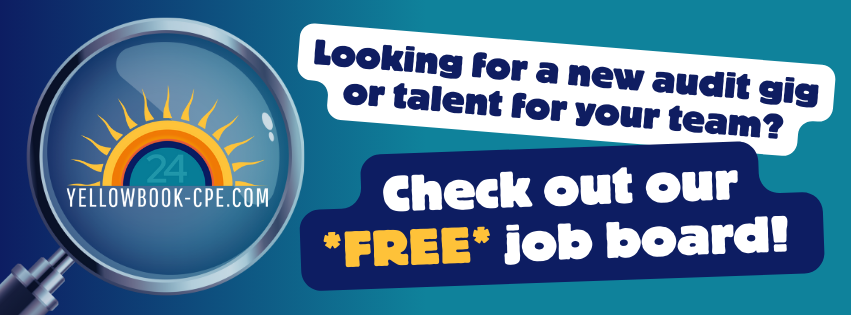Does your audit shop have enough personnel and financial resources to accomplish its goals?
Picture this: Your audit organization is a ship navigating the high seas and the CAE is the captain leading you to your next discovery.
But before you set sail, you need to make sure your ship is stocked, your crew is ready, and your map is up-to-date.
Without the right resources, you might find yourself adrift, or worse, sinking.
So, ahoy, mateys! Let’s hoist the sails and take a look at some key questions every audit organization should ask to keep its ship in tip-top shape:
Does the audit organization have enough personnel resources to address significant risks?
Imagine trying to sail a ship with just a handful of sailors. Sure, you might make it out of the harbor, but when the storm hits, you’ll wish you had a few more hands on deck. The same goes for an audit team. Without enough people to man the stations, significant risks might slip by. Before you know it, your ship is taking on water faster than you can bail it out.
Does the audit organization have sufficient funding to meet its objectives?
You wouldn’t set sail without enough provisions, right? An audit organization needs adequate funding to stay afloat. Whether it’s for the latest navigational tools (or in this case, audit software) or to keep the crew well-trained and sharp, having enough money in the ship’s coffers is crucial. Otherwise, you might end up stranded on some deserted island with nothing but an outdated compass and a soggy map.
Does audit management look prospectively at least one year out to assess fiscal needs?
A good captain doesn’t just think about today’s journey, they plan for the entire voyage. Audit management should be scanning the horizon at least a year out to anticipate fiscal needs. By charting a course well in advance, they can ensure there’s enough treasure (funding) in the chest to keep the ship running smoothly, no matter what surprises the sea might throw their way.
Does audit management look prospectively at least one year out to assess personnel needs?
You can’t run a tight ship without a capable crew. Audit management needs to think ahead about personnel needs, whether it’s bringing new sailors on board or preparing to say goodbye to old salts ready to retire. If they don’t plan ahead, they might find themselves short-handed just when they need all hands on deck.
Does audit management look prospectively at least one year out to assess infrastructure needs?
Let’s talk about the ship itself. Is it seaworthy? Are the sails in good shape? Is the navigation equipment up-to-date? Looking ahead to assess infrastructure needs is like making sure your ship is ready for the long haul. No one wants to be halfway through a voyage and realize the hull’s sprung a leak or the rigging’s about to snap. Planning for upgrades and maintenance ahead of time keeps the ship sailing smoothly.
Are those fiscal, personnel and infrastructure needs communicated to upper-level decision-makers?
Even the best-laid plans can’t go anywhere if the captain’s orders aren’t passed along to the crew. Communicating these needs to upper-level decision makers is like sending up a signal flare. If the people in charge don’t know what you need, they can’t help steer the ship in the right direction.
If yes, do upper-level decision-makers address those needs for resources?
Finally, if you’ve sent up your signal, it’s up to the admiralty (upper management) to chart the course and provide the resources. If they don’t, your ship might end up drifting aimlessly or worse, running aground. But if they do, you can rest assured your ship will stay on course, ready to face whatever waves come your way.
Running an audit organization is like captaining a ship. With the right crew, enough provisions, and a clear course, you’ll navigate the seas of risk with confidence. Keep your ship well-stocked, your crew prepared, and your map updated, and you’ll be ready to sail smoothly into the sunset, avoiding any unnecessary shipwrecks along the way.
Looking for high-quality and convenient CPE?
We have you covered! Our live webinars are a great choice if you want the learning to come to you. Just log on at the scheduled time and enjoy wherever you are! Here are a few of our upcoming courses:
- May 7: Internal Audit Strategy for Government Auditors (3 CPE hours)
- May 13: Continuous Improvement Tools for Government Auditing (2 CPE hours)
- May 15: Project Management for Government Auditors (3 CPE hours)
- May 21: Fraud Forum for Government Auditors (6 CPE hours)
- June 2-6: Virtual Audit Bootcamp (20 live hours + 7 bonus self-study hours for a total of 27 CPE hours)
Need to do things at your own speed, but still get all your credits? Plan your CPE around your life, not the other way around! Yellowbook-CPE.com has dozens of self-study courses, including the Audit Reporting Bundle. Are your audit reports sexy? Do they comply with standards? Can you confidently identify the root cause of any reportable condition? This bundle ensures the only product your audit client likely reads is legible and interesting!




 Yellowbook-CPE.com is registered with the National Association of State Boards of Accountancy (NASBA) as a sponsor of continuing professional education on the National Registry of CPE Sponsors. State boards of accountancy have final authority on the acceptance of individual courses for CPE credit. Complaints regarding registered sponsors may be submitted to the National Registry of CPE Sponsors through its website:
Yellowbook-CPE.com is registered with the National Association of State Boards of Accountancy (NASBA) as a sponsor of continuing professional education on the National Registry of CPE Sponsors. State boards of accountancy have final authority on the acceptance of individual courses for CPE credit. Complaints regarding registered sponsors may be submitted to the National Registry of CPE Sponsors through its website: